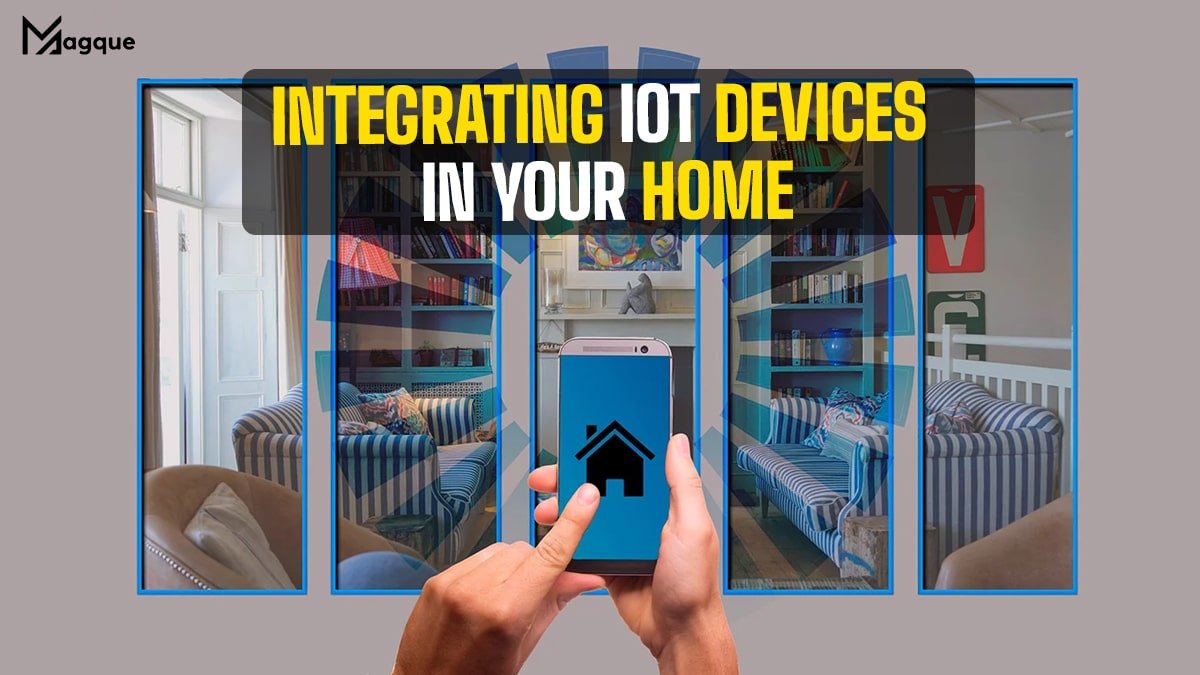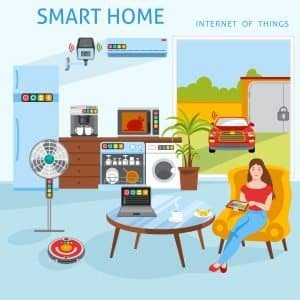In today’s fast-paced world, the concept of a smart home is no longer a distant dream but a rapidly unfolding reality. The magic behind this transformation? IoT devices. IoT, or the Internet of Things, has revolutionized how we interact with our homes, making everyday tasks more straightforward, efficient, and fun. So, how do you begin integrating these smart gadgets into your home? Let’s dive into the world of IoT, focusing on creating a seamlessly connected environment in your living space.
First, let’s talk about the heart of the matter: connectivity. The true potential of IoT devices lies in their ability to communicate with each other, creating a network that operates like a well-oiled machine. Imagine your alarm clock waking you up and signaling your coffee maker to start brewing your morning cup. That’s the beauty of a connected home.
But where do you start? The answer is more straightforward than you might think. Begin with devices that serve your most immediate needs. For some, that could be intelligent lighting systems that adjust with the time of day, creating the perfect ambiance for every moment. For others, a smart thermostat could be the game-changer, optimizing your home’s heating and cooling for comfort and efficiency.
Security is another significant aspect of smart homes that can’t be overlooked. With IoT, peace of mind comes in the form of smart locks and security cameras that keep an eye on your home, whether you’re there or halfway around the world. The beauty of these devices is not just in the security they provide but in the ease with which they can be managed, all from your smartphone.
Now, you might wonder, “But isn’t this all a bit complicated to set up?” Not at all! Most IoT devices are designed with the user in mind, meaning setup is generally straightforward. Plus, with platforms like Magque, finding suitable devices and understanding how to integrate them into your home has always been challenging.
It’s also worth noting the importance of choosing the right ecosystem. Whether it’s Google Home, Amazon Alexa, or Apple HomeKit, picking an ecosystem that works for you is crucial. It’s like choosing a team; once you’re in, every new device is a new player who adds to your team’s strength and capabilities.
Integrating IoT devices into your home is more than just a tech upgrade; it’s about crafting a living space that responds to your needs, simplifies your life, and even saves you money in the long run. The possibilities are endless, from smart bulbs that dim on command to thermostats that adjust to your schedule.
Remember, the key to a smart home is not just in the gadgets you choose but in how they work together to create a cohesive, intelligent environment. So, leap and start exploring the world of IoT. With curiosity and the proper guidance, your home can transform into a haven of convenience and innovation.
FAQs
1. What are the benefits of integrating IoT devices into my home?
Integrating IoT devices into your home offers several benefits, including enhanced convenience, improved energy efficiency, and heightened security. These devices allow you to automate and remotely control various aspects of your home environment, such as lighting, temperature, and security systems. This makes your daily life more comfortable and can lead to significant savings on your energy bills. Moreover, intelligent security devices provide peace of mind with features like real-time surveillance and alerts.
2. Do I need a strong internet connection for my IoT devices to work effectively?
Yes, a solid and stable internet connection is crucial for the optimal performance of IoT devices. These devices rely on internet connectivity to communicate with each other and use cloud-based services. You might experience delays, disconnections, or malfunctions without a reliable connection. For homes with numerous IoT devices, investing in a robust Wi-Fi system or considering a wired Ethernet connection for stationary devices can ensure a seamless smart home experience.
3. Can I integrate IoT devices from different brands into my home?
Absolutely! However, it’s essential to check the compatibility of these devices with your chosen smart home ecosystem (e.g., Google Home, Amazon Alexa, Apple HomeKit). While many IoT devices are designed to work across multiple platforms, some may be limited to specific ecosystems. A centralized platform or hub can also simplify managing devices from different brands, allowing them to communicate and work together more effectively.
4. How secure are IoT devices, and what can I do to enhance their security?
While IoT devices bring convenience and efficiency, they can pose security risks if not adequately secured. To enhance the security of your IoT devices, ensure you:
- Change default passwords and use strong, unique passwords for each device.
- Regularly update device firmware to patch vulnerabilities.
- Use a secured Wi-Fi network, preferably with a VPN, and consider a separate network for your IoT devices.
- Be cautious of device permissions and turn off any unnecessary features that could be exploited.
5. What should I consider before purchasing IoT devices for my home?
Before purchasing IoT devices, consider your specific needs and their compatibility with your existing smart home ecosystem. Also, evaluate the devices’ security features, their ease of installation and use, and the level of customer support provided. It’s also wise to read reviews and do some research to ensure you’re investing in reliable, high-quality products that will enhance your smart home experience.
Read Also This:- Integrating Smart Home Devices with Wearables













